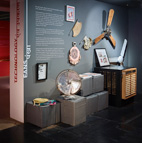My name Pankha, derives from the Sanskrit word ‘paksa’ meaning wing, originally implying any hand fan.
While hand fans were common to various ancient Asian and European societies, I, In India, was made from natural materials. Unlike other cultures that later appropriated Japanese folding fans and their social etiquette, in the Indian parlance, we remained simple objects of utility.
By the late 1800s, we were de rigeur for elite homes – British and Indian alike for the ventilation of large areas. A panel of fabric hung from the ceiling and ‘flapped’ back and forth, as punkahwallahs tugged at it from below.
We arrived as electric ceiling and table fans in India at the turn of the century. Not surprisingly, we were instantly popular and supplied majority of the day load, ensuring Calcutta Electric Supply’s success in the early years.
We were first manufactured by medium-sized ventures such as Tropical and Kassel Fans. Early models featured bamboo blades that were later replaced by metal. By the 1940s, major companies such as India Electric Works and Crompton Parkinson Works Limited had set up factories in the country.
Global demand waned with the advent of domestic air conditioning in the 1960s. India’s situation was different, however, making fans an economical necessity. Despite interrupted production, companies such as Jay Engineering Works Limited (that manufactured Usha fans and sewing machines) registered profits in 1965.
Even today, thrifty Indians appreciate fans as appliances that are pocket-friendly, easier to maintain and energy-efficient.




